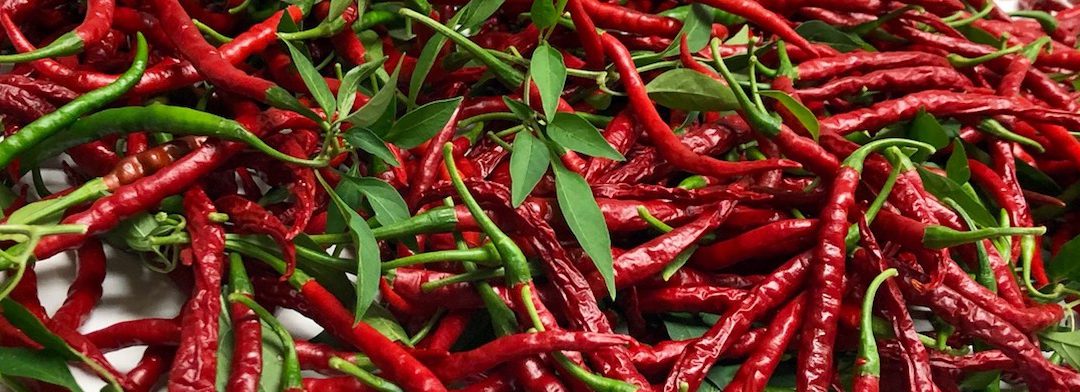
by Matthew Orwat | Sep 30, 2021
By Matthew Orwat and Judy Corbus
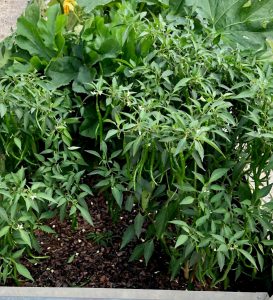
Cayenne Peppers growing this summer. Image Credit Matthew Orwat UF / IFAS Extension Washington County
As fall begins we often begin to think about the successes and failures of our vegetable gardens. Two of my successes this past summer have been pepper and basil.
A variety of peppers work great as transplants in mid to late spring. This spring a large variety of peppers were planted including Cayenne, Bell, Cubanelle, Habanero, Poblano, Anaheim, Cajun Belle, Havasau, Serrano, Jalapeno, and Banana. A loose, rich media was used containing coconut coir and composted organic humus to provide an excellent well-drained location which also retained moisture. Finding this delicate balance is difficult but can be achieved by using coconut coir and organic matter based garden soil mixtures. After the peppers were planted, they were side-dressed twice with a standard bagged 8-8-8 fertilizer blend containing micronutrients and once with an organic fertilizer. During the heat of the summer it was important to water the peppers at least every other day. Need for watering decreased as the fall weather approached, but was still necessary.
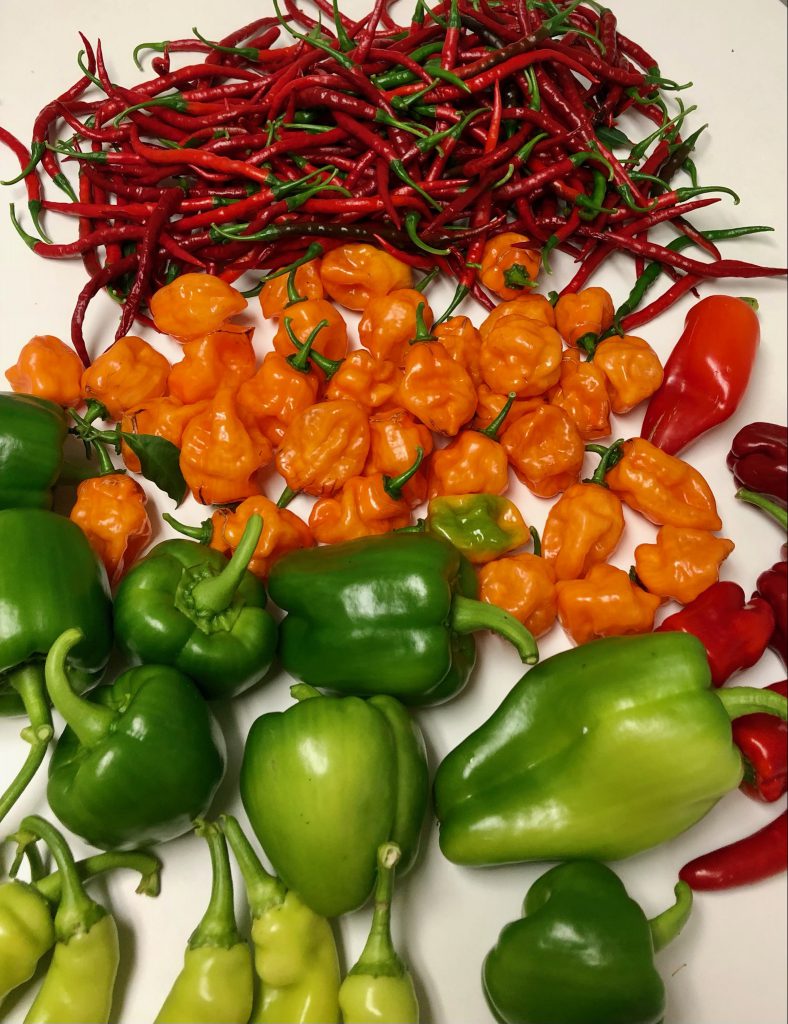
Bountiful Pepper Harvest. Image Credit Matthew Orwat UF / IFAS Extension Washington County
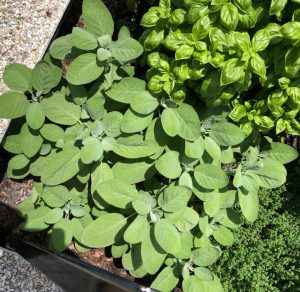
Sage and Basil Image Credit Matthew Orwat UF / IFAS Extension Washington County
In fall, many gardeners think it might be a good time to remove their peppers plants, but they can be encouraged to produce peppers until frost and maybe a little later with protection. Oftentimes it is more practical to start or transplant new pepper plants the following spring, but it is possible to pot up and overwinter peppers in a sheltered area or greenhouse.
In addition to peppers, basil was especially bountiful this year. To save my basil bounty for the winter I have options to dry, blanch or make pesto. This should be done before the first frost, since basil is very sensitive to freezing temperatures. Other herbs that will usually overwinter well in the garden include thyme, chives and rosemary. They will need little to no protection. Additionally, sage might come back the following year if it is in a protected area. Herbs such as cilantro and parsley will thrive in our North Florida winters and should be planted now.
To preserve the bounty of your harvest for later use, you may can, pickle, or freeze peppers. Follow these USDA-approved guidelines from the National Center for Home Food Preservation:
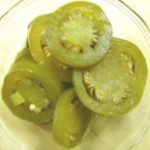
Credit : National Center for Home Food Preservation
Canning: https://nchfp.uga.edu/how/can_04/peppers.html
Pickling:
Freezing:
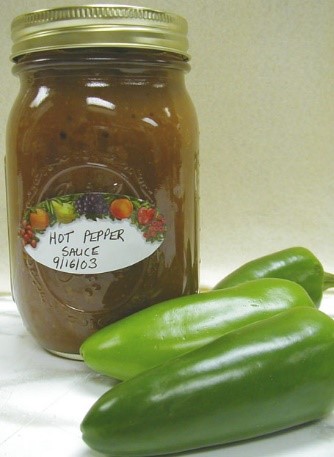
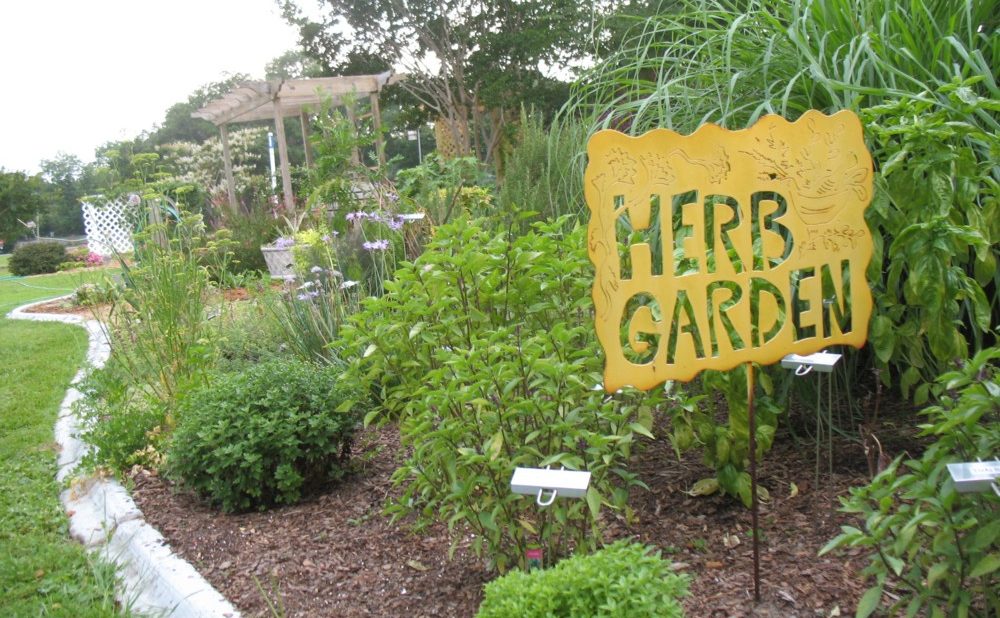
by Ashley Stonecipher | Sep 23, 2021
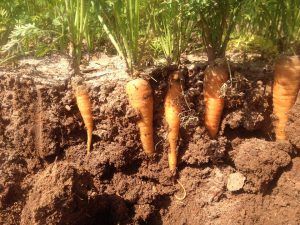
Photo by Full Earth Farm.
Yes, that’s right! We made it through the hottest part of the year and we are looking ahead to fall just around the corner! I am excited to be discussing September and what we can do to prepare for fall in the garden. As the nighttime temperatures start to cool down, we are given many more options.
For annual color plantings in September, try Ageratum, Celosia, Zinnias, and Wax Begonia to add fall color to your landscape. Bulbs will also add color, texture, and pattern to a bed. If you have some extra space, a variety of elephant ears could really accent a bed or you could always go with the classic calla, narcissus or zephyr lily. Popular vegetables to plant in North Florida in September are broccoli, carrot, cabbage, and collards. See Vegetable Gardening in Florida This is also the time of year to establish strawberry plants. Some great herbs to get started are Mexican tarragon, mint, rosemary, and basil.
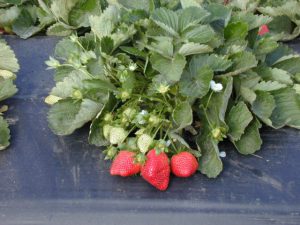
Image Credit: Matthew Orwat UF/IFAS Extension Washington County
There are many things that can be done in your lawn during September. Monitoring your lawn for its health and potential insect pests is important this time of year. Common insects to scout for are fall armyworms, chinch bugs, mole crickets, and sod webworms. The last fertilizer application should be done by the middle to end of September. Make sure you choose a fertilizer with little to no phosphorus unless a soil test shows differently. To maintain a healthy lawn, avoid weed and feed products and only apply herbicides in areas with high infestations of weeds. Weed and feed products are not recommended because the timing of when to fertilize and the timing of the weed killer is not always the same. The best management practice is to use a separate treatment for weeds and when possible spot treat weeds.
If you already have bulbs in your landscape from previous growing seasons, this is the time to divide and replant those that are big. You can also add organic matter to new planting areas. Continue working on your vegetable plants and prepare them for either transplants for a fast start, or plants seeds for more variety. Throughout your landscape, it is important that plants are getting the right amount of water as we go in and out of wet and dry weather this time of year.
October will be here before we know it in just a couple of weeks. Look out for the next article to come. We will be getting into the cooler nights and more options for planting vegetables and herbs!
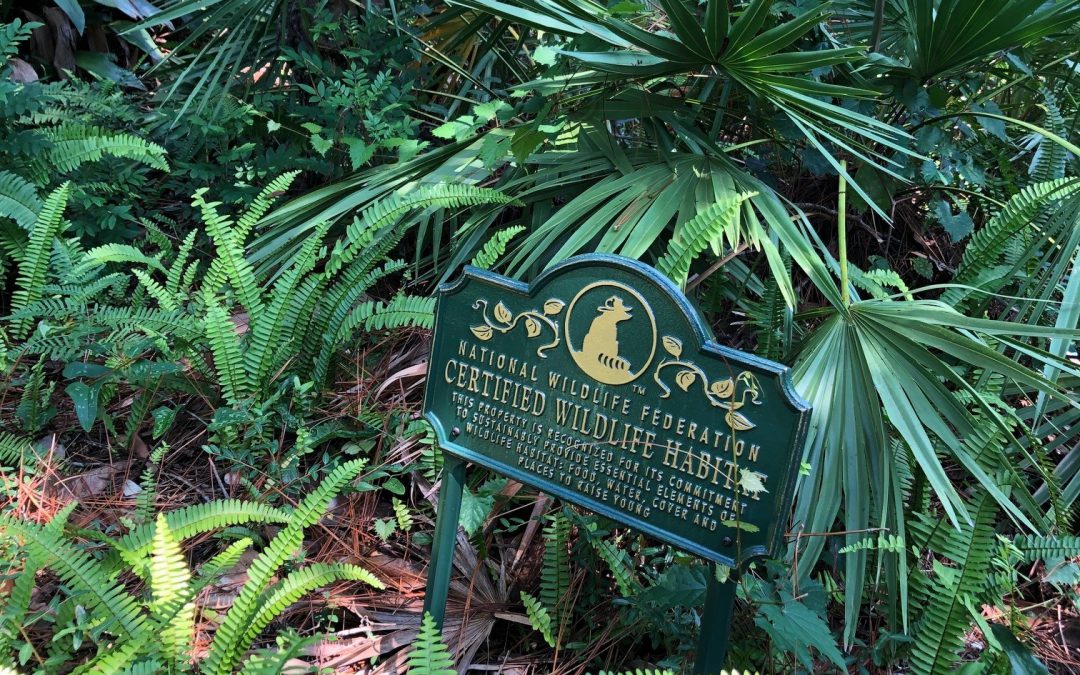
by Carrie Stevenson | Sep 17, 2021
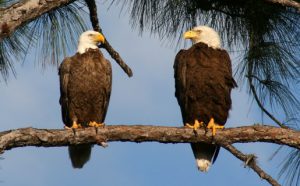
Bald eagles and other large birds of prey have made a comeback in Florida.
Florida has all the elements of a wild animal’s paradise. The state has abundant rain and water sources, lush vegetation, plenty of food, and tons of nesting and hiding places. In our state and national parks, conservation easements, open waters, and acres of ranch land, large populations of animals can thrive. Particularly in areas with fewer people, healthy populations of even large animals like black bears, alligators, and panthers can maintain substantial territories. However, human migration into and throughout Florida is increasing at as steady a rate as ever. Retirees have long fled their cold northern winters to move part or full time to Florida. Now, the ability for many working people to telecommute from anywhere has made it attractive for younger families from all over the country to join us.
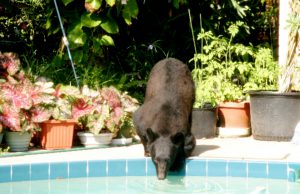
A black bear helps himself to a drink from the swimming pool of a Florida home. Photo provided by Patty Underwood/FWC
With more people comes the need for more housing. Some are content with high rise condos that leave a smaller footprint, but these are often located right on the water and can displace coastal wildlife and vegetation. For the thousands of families moving in weekly, more subdivisions, roads, stores, and schools are necessary. Inevitably, these lead to human-wildlife interactions that may or may not be positive experiences. In fast-growing south Santa Rosa County, I see almost daily reports of large black bears in backyards and trash cans. For smaller mammals, the threat of being hit by a car is unfortunately very common. For nearly every call we get about an exciting manatee sighting, we get word of a nerve-wracking interaction with a snake. As civilization moves closer to forested, once-wild areas, wildlife can be squeezed out, left without the protection of natural cover and drawn to human food and habitat.
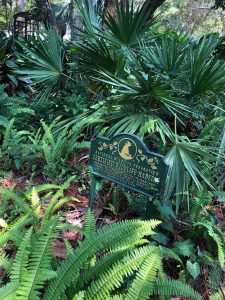
A lush backyard landscape surrounds a recognition sign from the National Wildlife Federation. Photo credit: Carrie Stevenson, UF IFAS Extension
There are plenty of ways we can co-exist, though. A Florida-friendly yard is a wildlife-friendly yard, and those who go the extra mile can even be recognized by the National Wildlife Federation for their efforts. There are several steps one needs to take to become wildlife-friendly. The most important include providing food, water, and cover, so the animals’ basic needs are met. Actions like removing invasive species, keeping pets supervised when outdoors, and adding layers of vegetation are also excellent ways to attract and protect native creatures.
While small and medium sized animals can find shelter in a single yard, it takes neighborhood cooperation to be a haven for something larger, like deer, bears, birds of prey, or large tortoises. Some neighborhoods are designated from the beginning to include conservation easements that serve as amenities to the neighborhood. They include trails, shady waterfront areas, and plenty of space for wildlife. It is important when moving into one of these neighborhoods that each homebuyer understands and respects the purpose behind conservation areas. Residents of older, existing neighborhoods can also work together to designate common areas and stretches of adjoining yards as wildlife-friendly corridors, allowing more animals to use the space safely.
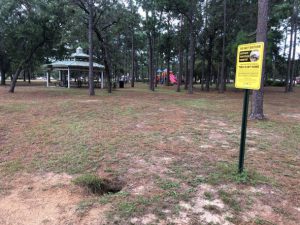
A gopher tortoise burrow is noted by a sign in a local city park. The tortoise is co-existing peacefully with its neighbors! Photo credit: Carrie Stevenson, UF IFAS Extension
In my own neighborhood in the city limits, a gopher tortoise has moved in and become a neighborhood mascot of sorts! When alerted to the presence of its burrow, the city brought in a sign explaining the animal’s protected status and crucial role in the environment. Floridians share their citizenship with thousands of other species. These breathtaking birds, fish, mammals, reptiles, and insects are integral to the health of our land and water. By taking steps to look out for their well-being, we are also providing for our own.
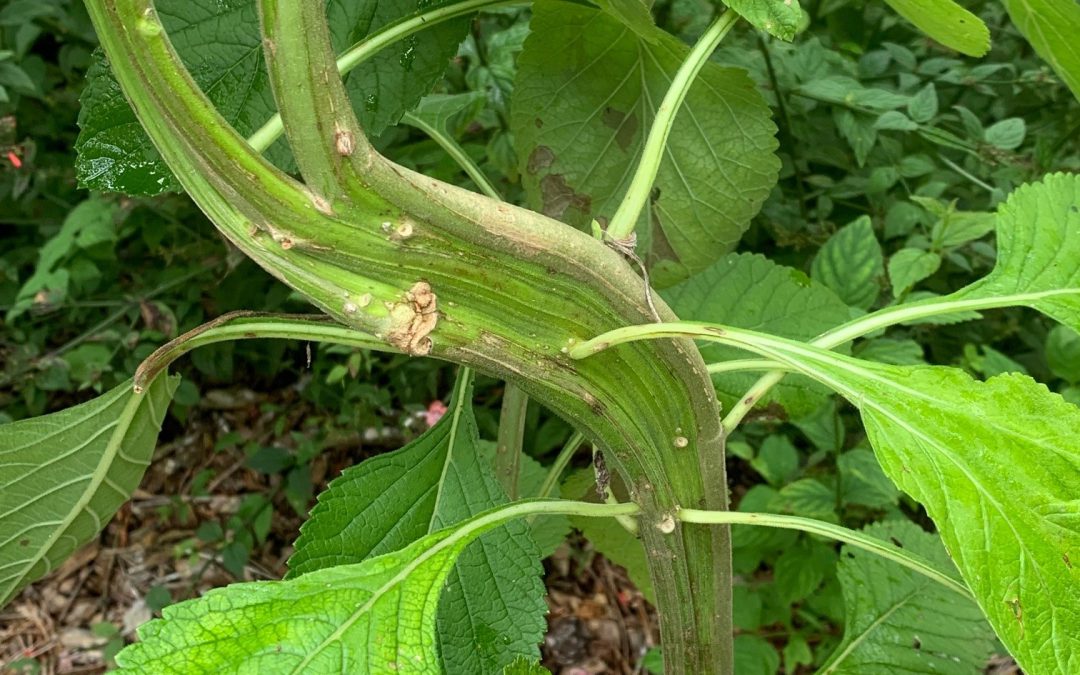
by Beth Bolles | Sep 16, 2021
Every so often while I am enjoying a walk through the garden, I notice a growth pattern on a plant that is just not normal. One of the more interesting patterns I see is called fasciation. This is a distortion of plant tissue that often causes flattened, curved, or the thinning of plant tissues. I recently noticed this on the stem of a Coral Porterweed in the Escambia County Demonstration Garden. The leaves were a normal shape but several inches of the stem were flattened and curved.
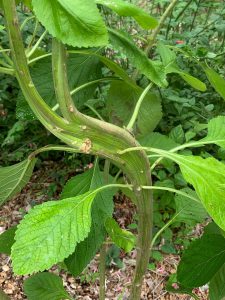
The distorted stem tissue of a Coral porterweed. Photo by Beth Bolles, UF IFAS Extension Escambia County.
So what is causing this type of growth pattern?
The most common cause of fasciation is usually some type of genetic mutation in the growing points of the plant. The other possible causes could be a physical injury to new tissues, a bacterial infection, chemical injury, or even an insect injury. Fasciation will be random in its occurrence and many gardeners may never have it occur on a plant in their yard. I have seen it on both woody and herbaceous plants in my own yard and in the demonstration gardens.
If you see a plant exhibiting this distortion of growth, you don’t need to take any action. If the growth is unsightly to you, prune out the affected plant tissue. It is probably best that you not propagate material from an affected plant just to prevent any transfer of the distortion to a new plant if the cause is genetic or from a living organism.
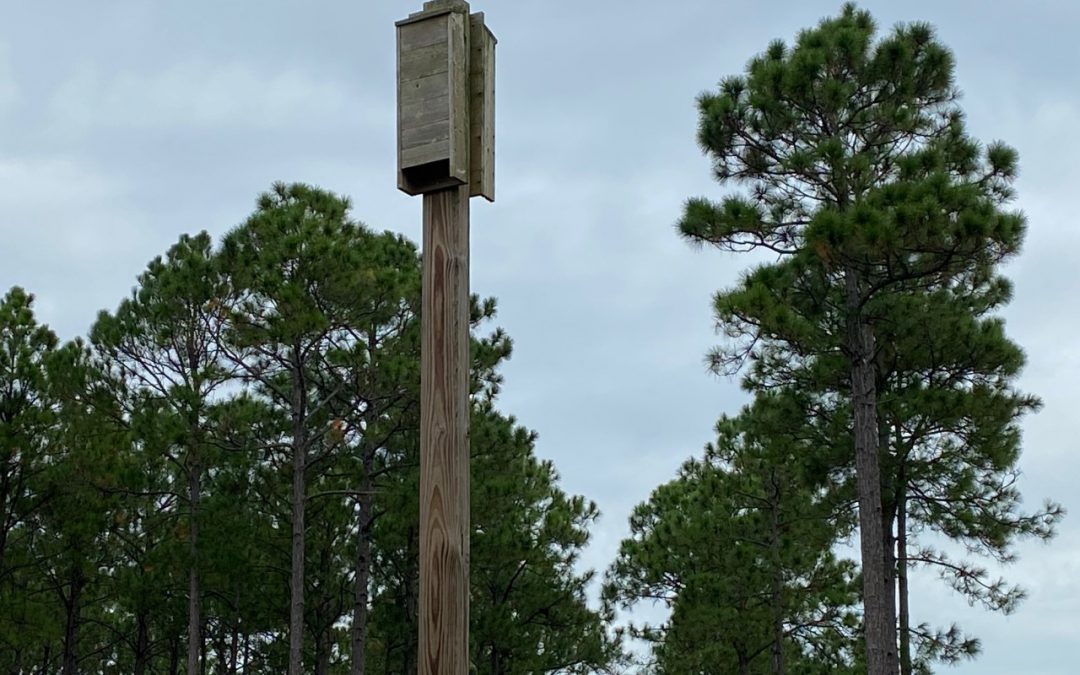
by Stephen Greer | Sep 16, 2021
Bats bring a beneficial component to your property and community. This flying mammal is an exceptional nocturnal feeder of many insect pests and they are important pollinators of many food plants. However, several challenges face this night flyer, like reduced roosting locations, reduced foraging sights, and over use of pesticides.
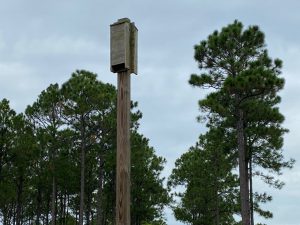
Photo courtesy: Stephen Greer
There are ways to attract bats to your backyard, farm, and community. Placement of bat boxes with ample water sources nearby is a good start. Water sources are another area of importance to attract bats. Have you sat by a swimming pool and witnessed a bat swoop down and skim across the water? It is likely they are either consuming a little water after feeding on a large number of harmful insects or are wetting their modified arms (wings) to help remove dust and dirt to reduce drag on their wings. Bats are the only mammal that are capable of true flight, the modified wings with skin spanning between specific bone structures allows them to accomplish this amazing action.
We often refer to bats as blind, but they can see shadows if out during daylight hours. This poor sight is not helpful enough for survival, this is where their echolocation abilities come into play. Humans studied bats to better understand how they make the sounds that bounce of an object and back to their sensing system that includes exceptional hearing. They locate and consume insects this way. If this sounds familiar, sonar systems were developed by studying this process.
Bats are the major harvester of night-flying insects, many that carry diseases that impact humans and other animals. Insect prey for bats include cockroaches, mosquitos, moths, beetles, gnats and others. A Big Brown Bat can catch and consume 3,000 to 7,000 mosquitos a night. Multiple this by a large bat population the amount of harmful insects harvested can go into the thousands of tons in a year. This is a positive impact for our forest and agriculture lands against major pests.
Florida is home to 13 different species of bats. They are always on the hunt for warm, dry, dark areas that are either natural or manmade narrow crevices. Out of all of these species, 4 bats are the primary inhabitants of bat houses. The Evening Bat and Brazilian free-tailed Bat are the most common in the panhandle of Florida. The Big Brown Bat and Southeastern Bat can at times occupy houses.
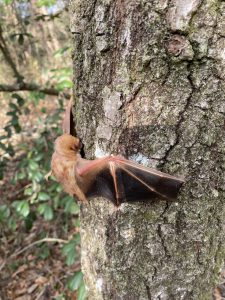
Photo courtesy: Matt Lollar
You can often locate bats boxes at your garden and agriculture centers or order online. Another option is to build your own boxes. Just remember the best way to erect a bat box is on a tall post. It is recommended to set the boxes around 10 feet off the ground. Placing boxes on trees creates a setting for potential predators to approach and feed on bats. Snakes have been known to enter and feed on young bats that are not fully developed and at best are poor fliers.
As a reminder, never touch a bat or any other wild animals. Bats that are healthy are not found on the ground, so assume the bat is not health and may be carrying a disease. On a final note, enjoy sitting on the back porch and watching the acrobatics of these amazing mammals in the evening sky.



















